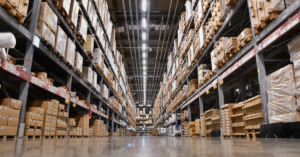Less than a decade ago, Fannie Mae began an untested concept, embarking on a new program to finance so-called green apartment buildings. The movement to make apartments more energy and water efficient has since become an unstoppable train that has led to billions of dollars in green-apartment financing.
Over the past two years, however, the regulator of the government- sponsored enterprises (GSEs), the Federal Housing Finance Agency (FHFA), has gradually stepped up requirements on building owners to qualify for GSE-eligible green loans. Fannie Mae crunched data and came to a surprising conclusion about the effects of these changes: Far from squelching the demand, the new framework under which the GSEs can tailor programs should keep green financing steaming ahead.
Fannie Mae began a multifamily green financing program nine years ago to create positive change in communities across the U.S. The idea was to improve the energy and water efficiency of multifamily properties through mortgage financing. This pioneering work ultimately gave rise to the largest green bond market in the world.
Today, multifamily lenders are likely to pursue green financing for their deals. In 2018, Fannie alone financed $20.1 billion in green multifamily loans through its lender partners, accounting for more than one quarter of Fannie’s overall multifamily loan volume.
From 2010 through 2018, Fannie Mae issued $51.7 billion in green multifamily mortgage-backed securities and $6.1 billion in green-structured securities. This reveals how popular these programs have become for lenders, mortgage brokers, borrowers and the end investors in the bonds. That interest will likely only grow, but there have been some changes to the loan programs in 2019.
New standards
Apartment owners must now achieve greater efficiencies to qualify for a GSE green loan that would carry a lower interest rate and provide other benefits. Although, on first blush, stiffer requirements might appear to stunt the potential growth of the green programs, a Fannie Mae analysis of more than 2,000 green loans in its book suggests otherwise.
First, the analysis revealed that most of the properties that secured green financing under Fannie’s program could have met the new efficiency targets with their original improvements. Second, the cost to implement the improvements under the new standards is not overly burdensome. The new requirements ultimately mean that more apartments will gain greater efficiencies, yielding more savings for owners and their tenants. This bodes well for the future demand for green loans.
Green loans incentivize multifamily property owners, through lower interest rates and other benefits, to upgrade apartment buildings to meet energy targets, or to build or bring apartments up to a green-building certified standard. FHFA’s new requirements affect Fannie Mae’s Green Rewards loan program, the larger of two programs offered by Fannie. Green Rewards is designed for owners whose properties aren’t certified as green, but are planning to make energy- and water-saving improvements at an existing property.
Measuring costs
Last year, FHFA imposed new requirements on the GSEs’ green programs for loans acquired in 2019. An apartment owner must now achieve a projected minimum 30 percent combined energy and water savings, including a minimum of 15 percent whole-property energy savings. That’s a higher total target compared to the 2018 requirement of 25 percent energy or water savings, but now energy and water savings can be combined to reach the target.
The changes are unlikely to weaken demand for these loans. To assess the impact of the new requirements, Fannie Mae analyzed its book of more than 2,000 Green Rewards loans acquired from 2016 to 2018. It found that more than 90 percent of the loans could have met the new requirements with the recommended improvements.
Furthermore, the analysis of the 2016 to 2018 loans found that the projected median cost to implement the energy- and water-saving improvements meeting the new 2019 requirements would be $462 per unit. Fannie also analyzed multifamily loans acquired so far this year and found that these had an average implementation cost of $466 per unit and a median cost of $400 per unit.
Broad appeal
The benefits to owners, their tenants and end investors should continue to fuel demand for these loans. Green loans offer the benefit of preferential pricing, but the property improvements also create value for owners beyond the interest rate. The new requirements generally will result in higher utility savings, which may not only improve the bottom line for property owners, but may also allow them to realize higher loan proceeds by underwriting a portion of the projected energy- and water-cost savings. The capital improvements made to the properties also may increase the value of the property.
Because tenants are frequently responsible for paying energy expenses, the 2019 requirements will drive even more savings to the tenants. Fannie’s analysis showed that tenants are projected to save $220 per unit annually with the 2019 requirements. In addition, tenants benefit from the energy- and water-savings improvements through better-quality, healthier and more resilient housing. The securitized loans also attract socially responsible investors to green bonds, thereby creating added liquidity for the housing-finance market.
Another path to green financing is through a Green Building Certification loan, available for properties that have been awarded a third-party green certification recognized by Fannie Mae, such as Leadership in Energy and Environmental Design (LEED) from the U.S. Green Building Council or Energy Star from the U.S. Environmental Protection Agency. These green-building certifications are available for both new and existing properties.
Fannie Mae reviews eligible and proposed certifications annually to ensure that the eligible certifications reach the most people while also maintaining high industry standards. In 2018, Fannie added five certifications and removed two. A 2019 review is underway that might lead to further modifications.
Social benefits
This past March, Fannie Mae’s first-green bond report detailed the impact of the company’s $51.7 billion in green bonds brought to market from the inception of its green-financing business through the end of 2018. The financial, social and environmental impacts add up quickly.
Energy savings are projected to reduce greenhouse-gas emissions by 287,000 metric tons per year. Water use is projected to decline by 5.9 billion gallons per year. Families and individuals living in these multifamily homes are projected to save $72 million annually, equivalent to an average of 10 percent on their utility bills, or about $145 per household annually. In addition, an estimated 170,000 jobs were created or supported through the construction and retrofitting of 550,000 apartment units.
Although creating positive change sounds simple, it took almost half a decade to develop the right combination of infrastructure, innovation and incentives that comprise today’s green-financing program. Fannie Mae continues to build the program with the innovative spirit of its birth, testing new approaches and striving to make the green loan products better for commercial mortgage lenders and borrowers.
Author
-
Karyn Sper is the director of Fannie Mae’s multifamily green and healthy-housing financing business. She focuses on developing and implementing financing products that increase the health and sustainability of the country’s multifamily housing stock and creating analytical tools to assess the impact of green financing. Prior to joining Fannie Mae, Sper spent five years in commercial real estate loan underwriting and business development at MMA Realty Capital, and eight years in environmental consulting, where she specialized in solid waste management and pollution prevention.
View all posts







